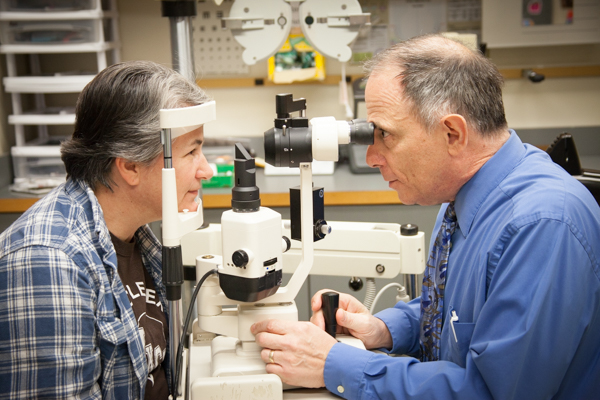The Role of Advanced Diagnostic Equipment in Identifying Eye Disorders
In the realm of ophthalmology, the usage of innovative analysis devices has reinvented the early recognition and management of various eye disorders. As the need for precise and timely medical diagnoses proceeds to grow, the integration of advanced devices like optical comprehensibility tomography and visual area testing has become essential in the world of eye treatment.
Value of Very Early Diagnosis
Very early diagnosis plays a crucial function in the reliable management and therapy of eye conditions. Prompt recognition of eye conditions is essential as it permits punctual intervention, possibly stopping further progression of the disease and reducing lasting issues. By finding eye conditions at an onset, doctor can use suitable treatment strategies customized to the certain problem, ultimately causing better results for patients. Furthermore, early diagnosis allows clients to access necessary assistance services and resources sooner, boosting their general lifestyle.

Modern Technology for Identifying Glaucoma
Sophisticated diagnostic modern technologies play a vital role in the very early detection and tracking of glaucoma, a leading reason for permanent blindness worldwide. One such innovation is optical comprehensibility tomography (OCT), which provides in-depth cross-sectional photos of the retina, enabling for the measurement of retinal nerve fiber layer thickness. This dimension is important in analyzing damage triggered by glaucoma. An additional sophisticated device is visual area testing, which maps the sensitivity of a person's visual field, aiding to spot any type of locations of vision loss quality of glaucoma. Furthermore, tonometry is used to determine intraocular stress, a major threat factor for glaucoma. This test is critical as elevated intraocular pressure can cause optic nerve damages. More recent technologies like the use of synthetic intelligence algorithms in examining imaging information are showing encouraging outcomes in the very early discovery of glaucoma. These innovative analysis devices make it possible for eye doctors to diagnose glaucoma in its early stages, enabling timely treatment and far better monitoring of the condition to stop vision loss.
Role of Optical Coherence Tomography

OCT's ability to evaluate retinal nerve fiber layer thickness allows for specific and unbiased measurements, helping in the early discovery of glaucoma also prior to visual area flaws end up being apparent. In addition, OCT innovation permits longitudinal surveillance of structural adjustments gradually, assisting in tailored treatment strategies and timely treatments to help maintain clients' vision. The non-invasive nature of OCT imaging likewise makes it a recommended choice for monitoring glaucoma progression, as it can be duplicated routinely without creating discomfort to the client. On the whole, OCT plays an important role in improving the analysis accuracy and administration of glaucoma, inevitably adding to much better results for people in jeopardy of vision loss.
Enhancing Medical Diagnosis With Visual Field Testing
An important element in detailed sensory analyses, aesthetic area screening plays a pivotal role in enhancing the diagnostic process for various eye conditions. By examining the complete degree of an individual's aesthetic field, this test offers their website important info about the practical stability of the entire visual path, from the retina to the aesthetic cortex.
Aesthetic field testing is particularly important in the diagnosis and management of conditions such as glaucoma, optic nerve problems, and numerous neurological illness that can influence vision. Via measurable measurements of peripheral and main vision, medical professionals can find refined changes that might indicate the presence or development of these problems, also prior to recognizable signs occur.
Furthermore, aesthetic field testing allows for the monitoring of treatment efficiency, assisting ophthalmologists customize visit this site restorative interventions to individual people. eyecare near me. By tracking modifications in aesthetic area efficiency gradually, doctor can make informed choices about readjusting medicines, recommending medical interventions, or applying other appropriate procedures to preserve or enhance a patient's aesthetic function
Handling Macular Deterioration
Final Thought
Finally, progressed analysis devices play an essential role in identifying eye disorders early. Technologies such as Optical Coherence Tomography and visual field testing have significantly improved the accuracy and efficiency of detecting problems like glaucoma and top article macular deterioration. Early detection permits timely intervention and management of these problems, inevitably causing much better results for clients. It is necessary for health care experts to stay upgraded on these improvements to supply the very best possible care for their people. eyecare near me.
Comments on “Locate the very best Glaucoma Service Near Me: Specialist Eye Treatment Solutions”